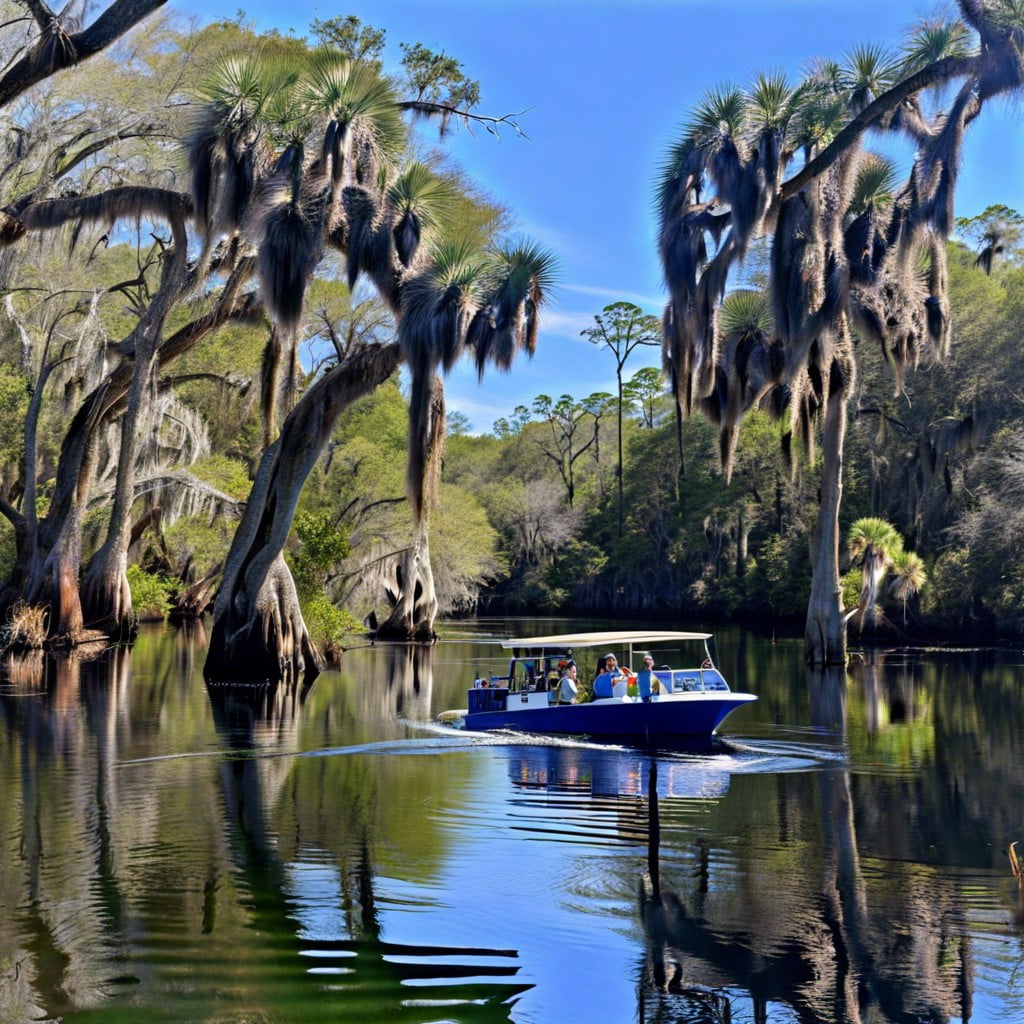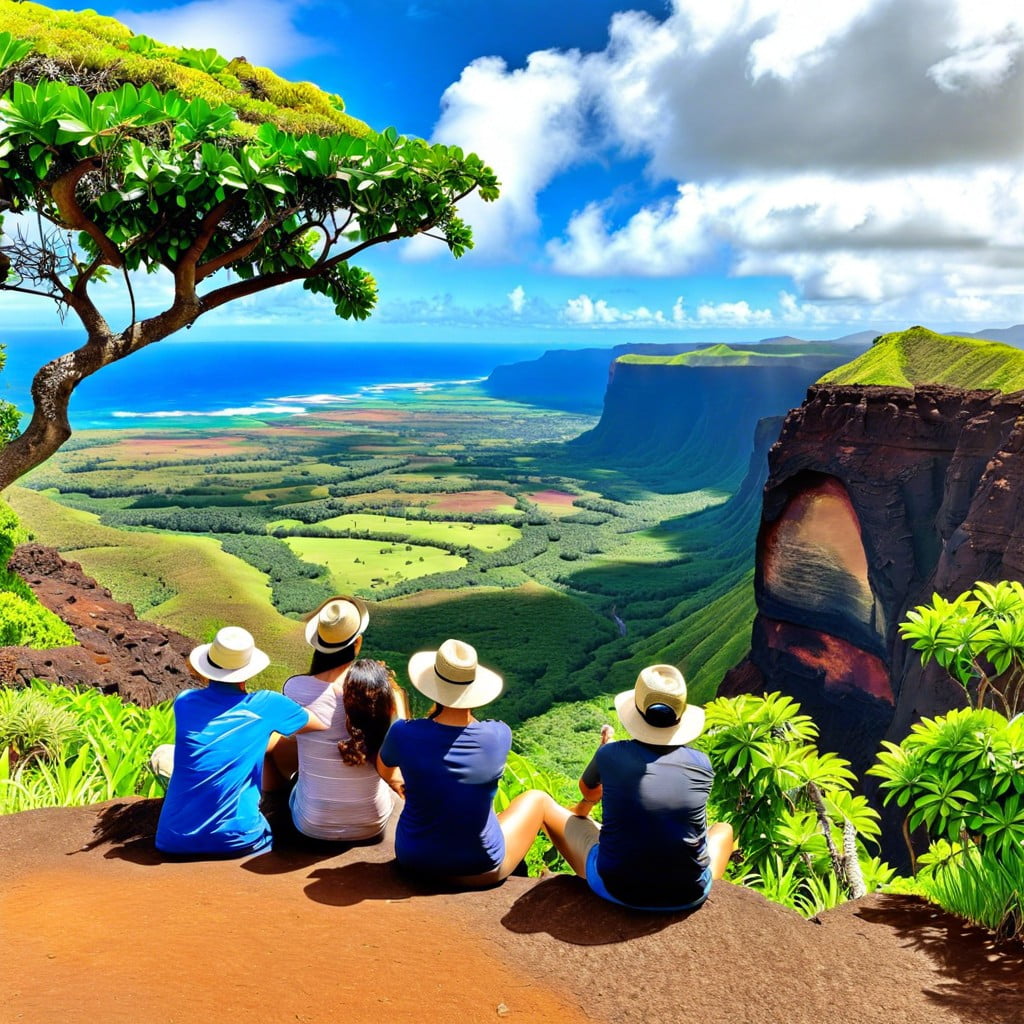Last updated on
Embark on a visual journey around the globe because the allure of the world’s most breathtaking landscapes awaits you in this article.
Embark on an unforgettable journey as we explore the top 6 best landscape places in the world. From the untamed wilderness of Patagonia to the mesmerizing beauty of the Northern Lights in Iceland, we’ll delve into hidden details, making this virtual expedition an authentic window into the world’s extraordinary beauty.
With picturesque photographs and compelling insights, get ready to satisfy your wanderlust and perhaps, inspire your next bucket-list destinations. With every word, you’ll find yourself closer to nature’s marvels.
So pack your virtual bags; the landscapes of your dreams await!
Key takeaways:
- Banff National Park: Majestic wilderness with turquoise lakes and wildlife.
- The Grand Canyon: Vast and awe-inspiring with hiking and aerial views.
- The Great Barrier Reef: Underwater wonder supporting biodiversity and culture.
- Patagonia: Rugged beauty with iconic peaks and glaciers.
- Mount Everest: The highest peak on Earth, offering breathtaking views.
Criteria for the Best Landscape Places
Selecting the world’s most breathtaking landscapes is a subjective endeavor; however, there are certain attributes that elevate a place to the pinnacle of natural wonder:
- Diversity of Ecosystems: Complexity and variety in plant and animal life contribute to a rich and dynamic environment.
- Unique Geographical Features: Distinctive formations like canyons, mountains, and coral reefs often define a destination’s iconic status.
- Color Palette: Vivid and contrasting natural colors that create stunning visuals, from turquoise waters to green forests and red rock formations.
- Scale and Grandeur: Vast expanses and dramatic sizes that offer a sense of awe and grand scale.
- Conservation Status: Landscapes that are well-preserved and maintained, often within protected parks or reserves.
- Accessibility: Locations that offer a range of opportunities for visitors to experience their splendor, balanced with the importance of preserving natural beauty.
These points not only guide our selection but also serve as a reminder of the intrinsic value these landscapes hold, encouraging appreciation and conservation efforts.
Banff National Park, Canada: Majestic Wilderness
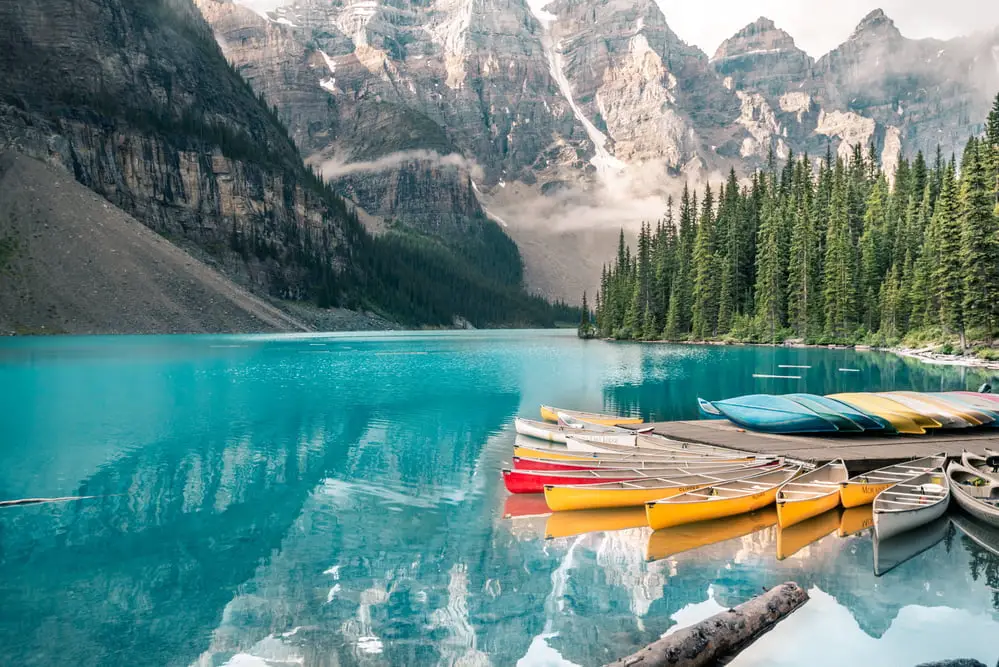
Nestled within the heart of the Canadian Rockies, Banff National Park is a sanctuary of stunning vistas and diverse wildlife. With over 6,500 square kilometers of mountainous terrain, it offers a plethora of activities for nature enthusiasts.
In summer, the park invites hikers to explore more than 1,600 kilometers of trails ranging from easy lakeside strolls to challenging mountain treks. Lake Louise and Moraine Lake are jewels that boast vibrant turquoise waters, framed by glacier-clad peaks, providing spectacular photo opportunities and peaceful canoeing excursions.
When winter blankets the land, Banff transforms into a snowy paradise. Skiers and snowboarders get their adrenaline fix on world-class slopes while ice skating on Lake Louise becomes a magical experience with a picture-perfect backdrop. Beyond the thrill of sports, wildlife tours reveal the park’s inhabitants in their natural habitat, including elk, bears, and bighorn sheep.
For an immersive cultural experience, the park’s history and heritage can be explored through guided tours of the Cave and Basin National Historic Site—the birthplace of Canada’s National Park system. Co-existing harmoniously with the environment, eco-friendly accommodations range from rustic backcountry lodges to luxurious mountain resorts, ensuring a comfortable stay for any preference. Always remember to respect the park’s delicate ecosystem; stay on designated paths and follow Leave No Trace principles.
The Grand Canyon, USA: Vast and Awe-Inspiring
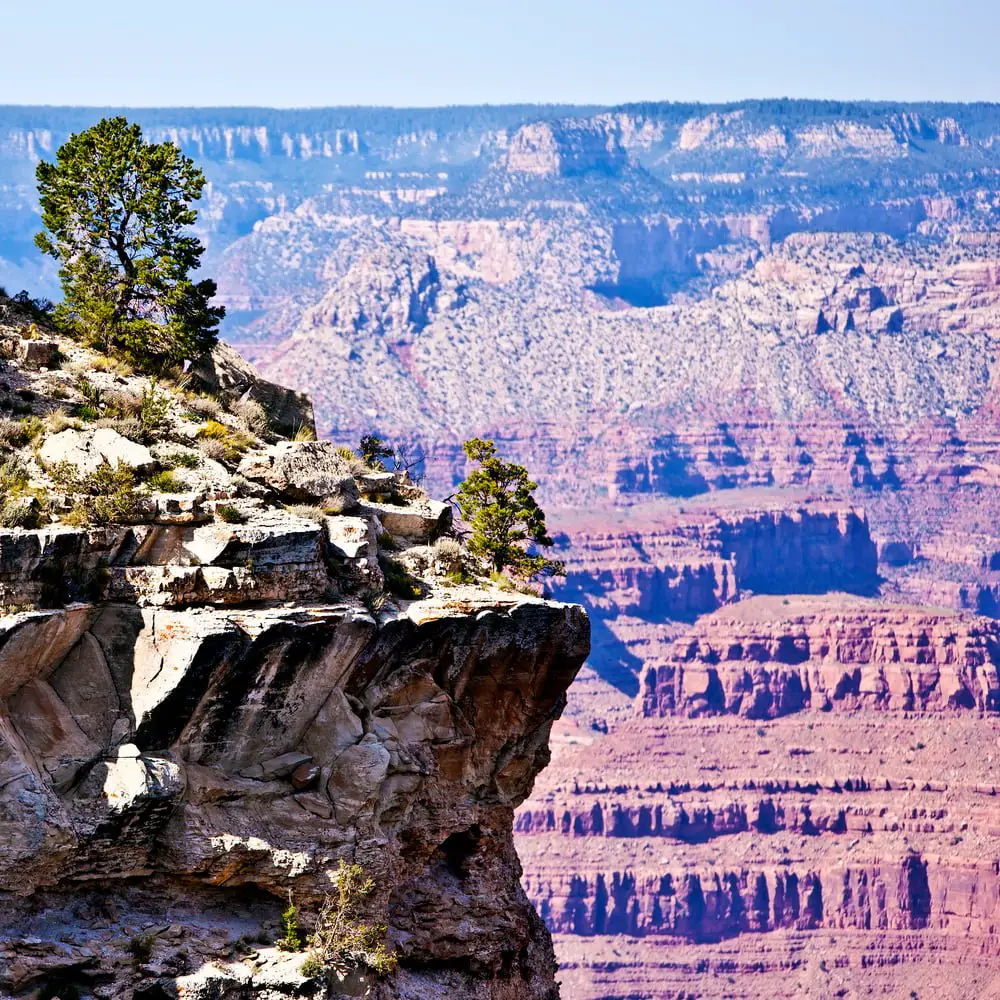
Carved over millions of years by the Colorado River, this iconic chasm stretches over 277 miles and can reach over a mile deep, offering a spectacle of layered red rock that reveals the history of the earth itself.
To fully embrace its grandeur, explore the South Rim, which is open all year and offers panoramic vistas accessible by the Rim Trail.
For the adventurous, hiking trails like Bright Angel or Kaibab lead into the depths, where the magnitude truly unfolds.
For a unique perspective, consider a helicopter tour for breathtaking aerial views or a rafting trip on the Colorado River to witness the sheer cliffs from below.
Sunrise and sunset transform the canyon, casting dynamic hues that photographers and nature lovers cherish.
Remember to check for weather conditions and trail accessibility, as they can change seasonally.
With responsible exploration, this natural wonder is sure to leave a profound impact on any visitor.
The Great Barrier Reef, Australia: Underwater Wonderland
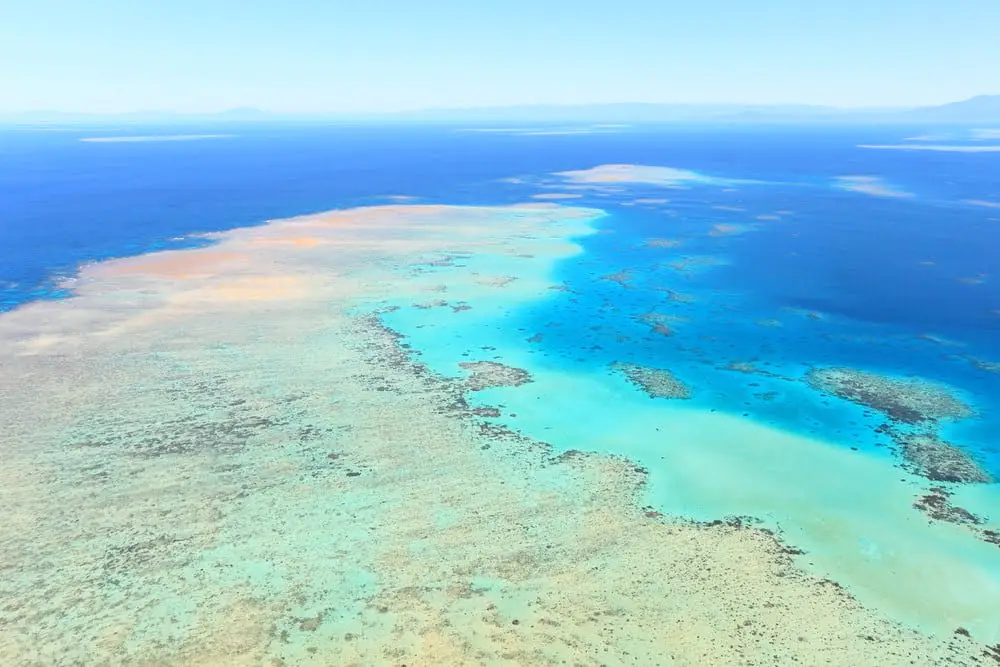
Diving into the vibrant ecosystem of the Great Barrier Reef reveals a universe brimming with color and life. Spanning over 2,300 kilometers, this aquatic spectacle is home to a staggering array of coral species and an even more impressive collection of marine fauna.
Here are some key points to help you grasp the magnificence of this natural wonder:
- Biodiversity: The reef supports an extraordinary mix of creatures, from tiny, vivid nudibranchs to the majestic humpback whale. This hotspot of biodiversity is a crucial habitat for endangered species and a living laboratory for scientists.
- Snorkeling and Diving: These are the best ways to experience the reef’s splendor. With options suitable for beginners to advanced divers, the reef is accessible to a wide audience looking to explore underwater marvels.
- Conservation Efforts: This ecosystem faces threats from climate change, pollution, and overfishing. Initiatives aimed at preservation are in place, and visitors can choose eco-friendly tours to support conservation.
- Natural Icon: Recognized as a UNESCO World Heritage site, the reef’s significance transcends its physical beauty, marking it as an irreplaceable part of the planet’s natural heritage.
- Interaction with Aboriginal Culture: The reef area is rich with Aboriginal and Torres Strait Islander history and culture, offering visitors the chance to learn about the traditional custodians of this land and sea.
Patagonia, Argentina and Chile: Rugged Beauty
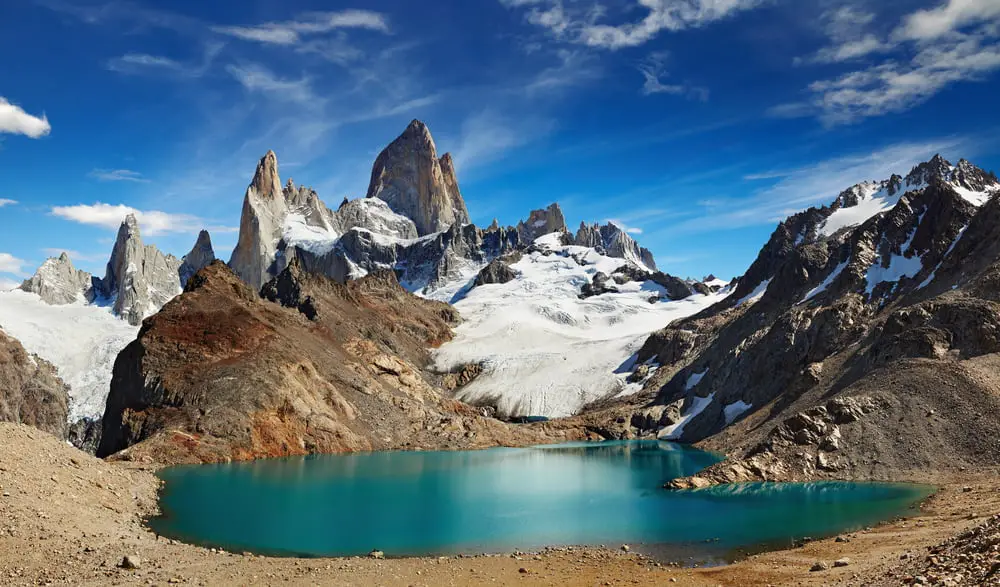
Straddling the southern tips of both Argentina and Chile, Patagonia is a region that stirs the soul with its dramatic landscapes. Envision towering mountains, pristine lakes, and enormous glaciers—a trekker’s paradise.
Here, the famed Torres del Paine National Park steals the show with its iconic jagged peaks and turquoise waters. Meanwhile, the Perito Moreno Glacier offers a spectacular display of nature’s might.
Those seeking solace in the wild will find the vast, arid steppe and rugged Andes mountain range foster a sense of profound solitude and adventure. Wildlife enthusiasts can revel in watching Andean condors soar and guanacos roam.
Accessibility varies greatly, with some areas offering luxurious lodges and others only reached by multi-day hikes or horseback rides. Remember, the austral summer, between November and February, presents the most favorable weather for exploring Patagonia’s outdoors.
Mount Everest, Nepal and Tibet: The Roof of the World
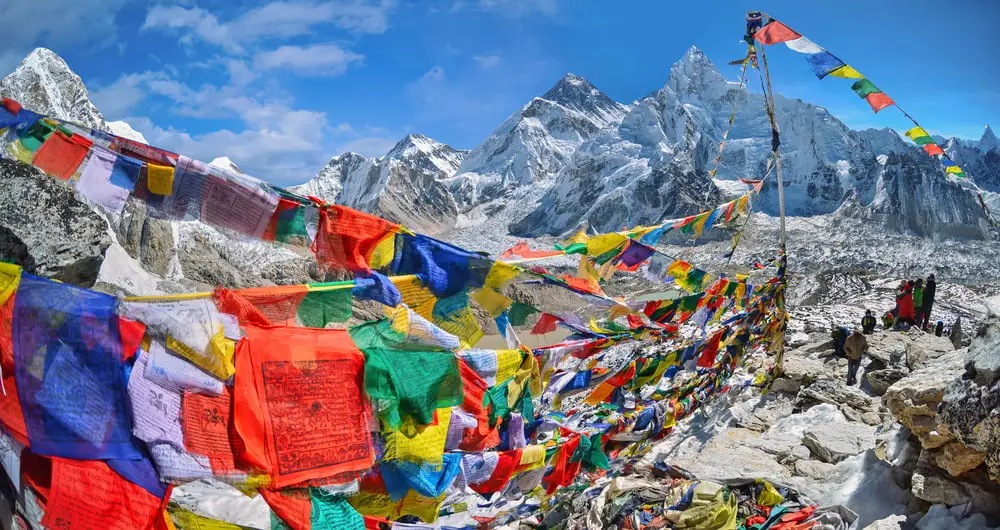
Straddling the border between Nepal and Tibet, this iconic peak stands tall as a beacon for adventurers and nature lovers alike. Here are some key points about this majestic natural wonder:
- Elevation: At a staggering 29,032 feet, it’s the highest point on Earth, offering breathtaking views and a truly humbling experience.
- Trekking Routes: The most popular routes to witness its grandeur are the South Col Route from Nepal and the North Col Route from Tibet. Both offer unique challenges and perspectives.
- Flora and Fauna: The region boasts unique wildlife, such as the snow leopard and red panda, and a range of alpine vegetation.
- Sherpa Culture: The local Sherpa community provides invaluable insights into the region’s culture and traditions, as well as expert guidance on the mountain.
- Environmental Concerns: Aspiring visitors should be mindful of their ecological footprint and respect the delicate balance of this high-altitude ecosystem.
Remember, visiting Mount Everest is about more than just conquering a mountain; it is a profound experience that connects you with the sheer power and beauty of nature.
Fiordland National Park, New Zealand: Untouched Beauty
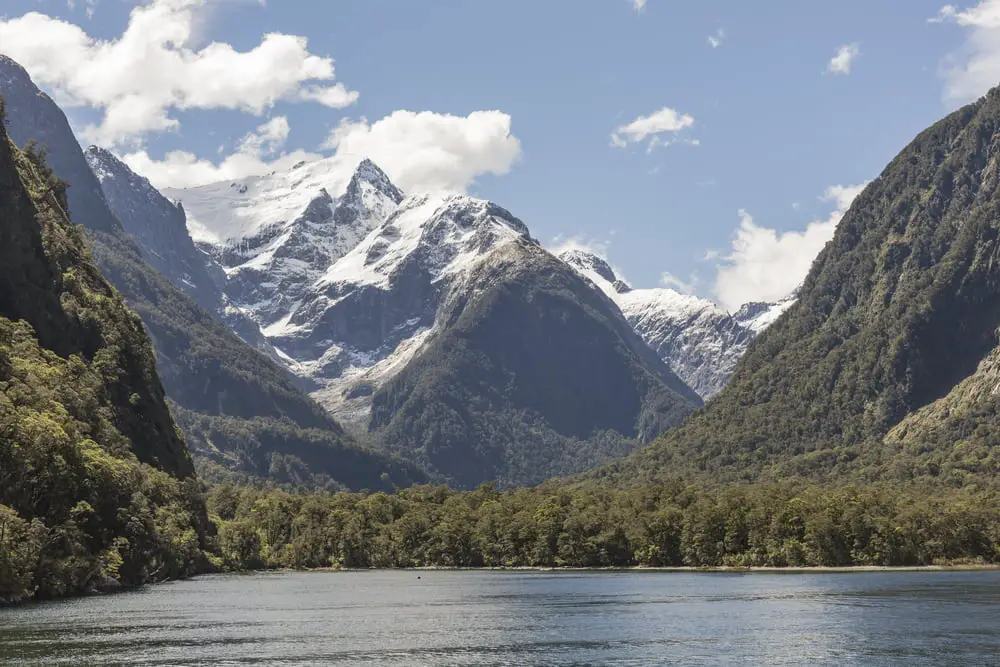
Nestled in the southwest corner of New Zealand’s South Island lies a pristine and rugged escape from the modern world. Fiordland National Park is a testament to nature’s artistry, encompassing dramatic fjords carved by glaciers, thundering waterfalls, and dense rainforests.
Exploring this UNESCO World Heritage site offers a rare glimpse into untouched wilderness where rare wildlife, such as the elusive Fiordland penguin and the world-famous flightless takahe, thrive.
Embrace the tranquility of Milford Sound, described by Rudyard Kipling as the ‘eighth wonder of the world,’ where you can take guided boat tours that reveal cascading waterfalls and towering cliffs draped in greenery.
For those who yearn for adventure, the park offers some of New Zealand’s most iconic hikes, including the Milford, Kepler, and Routeburn Tracks, promising breathtaking views and a true connection with the untouched landscape.
Accessible mainly through tourism hubs such as Te Anau, visitors are encouraged to respect this fragile ecosystem. The park’s commitment to conservation ensures these landscapes remain unspoiled for future generations, and every traveler plays a role in this endeavor.
Whether you venture here for photography, hiking, or simply to marvel at nature’s wonders, Fiordland will imprint an indelible sense of awe upon your memory.
The Best Time to Visit These Landscapes
Timing your visit can markedly enhance your experience as each landscape has periods where their natural beauty peaks or when the crowd levels are more manageable.
Banff National Park: Late June to August offers the best weather for hiking, though September to November showcases striking fall colors with fewer tourists.
The Grand Canyon: Spring (April to June) avoids the scorching heat and crowded paths typical of summer.
The Great Barrier Reef: Avoid the Australian summer; instead, opt for April to June, when the water is still warm and the rainfall has subsided.
Patagonia: The Southern Hemisphere’s summer, from December to February, promises milder temperatures ideal for exploring.
Mount Everest: Pre-monsoon (late April to early June) or post-monsoon (late September to November) provides clearer skies and safer climbing conditions.
Fiordland National Park: The local summer, December through February, presents longer daylight hours and more stable weather for enjoying the fjords.
Be mindful of local holidays and events that might affect crowd sizes, and always factor in the regional weather patterns when planning your journey for an optimal encounter with these breathtaking vistas.
How to Responsibly Visit Natural Landscapes
Embrace minimal impact practices by staying on designated paths to protect native flora and fauna. Carry out everything you bring in, adhering to a strict ‘leave no trace’ ethic.
Choose eco-friendly tour companies and accommodations to support conservation efforts. Respect wildlife by observing from a distance and not feeding animals, ensuring their natural behavior remains undisturbed.
Educate yourself about the local environment and cultural history to enhance your appreciation and awareness. Participate in local conservation initiatives, if available, to give back to the community and help maintain these natural wonders for future generations.
FAQ
What are landscapes in the world?
Landscapes in the world include deserts, plains, taigas, tundras, wetlands, mountains, mountain ranges, cliffs, coasts, littoral zones, glaciers, polar regions of Earth, shrublands, forests, rainforests, woodlands, jungles, moors, steppes, and valleys.
What differentiates certain landscapes and sets them apart as the best in the world?
The distinguishing feature of the world’s best landscapes is their unique combination of natural elements such as water bodies, mountains, vegetation, wildlife, and climatic conditions, which create a stunning visual appeal and offer captivating experiences.
Which factors should one consider when ranking the world’s top landscapes?
When ranking the world’s top landscapes, factors that should be considered include natural beauty, environmental diversity, uniqueness, accessibility, and ecological sustainability.
How do cultural perceptions influence our views on the world’s best landscape places?
Cultural perceptions shape our views on the world’s best landscape places by influencing what we consider beautiful or significant, often rooted in our historical, geographical, and social backgrounds.
Continue reading:
Recap
